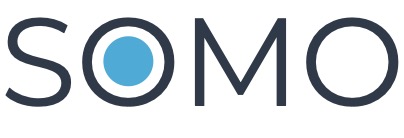Citizen Generated Data (CGD)
1. Overview of Digital Communication Platforms: Websites, Social Media, and Email Newsletters
In today's digital age, online platforms are essential for promoting CGD projects, engaging communities, and increasing project visibility. Understanding each platform's unique strengths is crucial for building an effective digital communication strategy.
Key Platforms:
- Websites:
- Purpose: A website acts as a central hub for information about the CGD project, including its goals, outcomes, and updates.
- Key Features: News sections, blog posts, downloadable reports, event calendars, contact forms.
- Audience: Broader public, funders, partners, and media.
- Social Media:
- Platforms: Facebook, Twitter, Instagram, LinkedIn, YouTube.
- Purpose: Social media is excellent for quick updates, community interaction, and generating awareness.
- Key Features: Instant feedback (likes, shares, comments), visual content (photos, videos), event promotion.
- Audience: Community members, activists, general public, influencers.
- Email Newsletters:
- Purpose: Newsletters help maintain direct communication with stakeholders and supporters by providing curated updates.
- Key Features: Regular project updates, calls to action, invitations to events, success stories.
- Audience: Donors, volunteers, project partners, engaged community members.
2. Strategies for Creating Engaging and Shareable Content That Promotes Community Involvement and Project Visibility
Creating content that resonates with your audience and encourages participation is critical for the success of a CGD project. Engaging content should be informative, visually appealing, and easy to share across platforms.
Content Creation Strategies:
- Tell a Story: Share personal stories from community members or highlight specific outcomes of the project to humanize the data and connect with your audience emotionally.
- Use Visuals: Infographics, videos, and photographs can make complex data more digestible and engaging. Use visuals to illustrate key findings or show the impact of the project.
- Calls to Action (CTA): Encourage your audience to get involved by including clear CTAs, such as attending an event, signing a petition, or sharing content.
- Share Successes and Challenges: Be transparent about the project’s progress, including both its successes and any challenges faced, to build trust with your audience.
- Leverage User-Generated Content: Encourage community members to share their own experiences, photos, or videos related to the project, which can help expand the project’s reach organically.
- Hashtags and Tagging: Use relevant hashtags on social media to increase visibility, and tag key influencers or organizations to expand your audience.
3. Tips for Managing Social Media Profiles and Websites: Content Planning, Scheduling, and Audience Interaction
Effectively managing digital platforms requires careful planning and consistency to maintain engagement. Here's how to streamline content creation and interaction across platforms:
Social Media Management:
- Content Planning: Develop a content calendar that outlines when and what you will post. Include a mix of content types (updates, community stories, event promotions, infographics) and align them with project milestones.
- Scheduling: Use tools like Hootsuite, Buffer, or TweetDeck to schedule posts in advance. This helps maintain a regular posting schedule without requiring constant manual updates.
- Engagement: Respond to comments, answer questions, and acknowledge feedback promptly. Create opportunities for interaction by hosting live Q&A sessions, polls, or discussion threads.
- Monitor Analytics: Track engagement metrics (likes, shares, comments, clicks) to see what content performs best, and adjust your strategy accordingly.
Website Management:
- Keep It Updated: Ensure that the website is regularly updated with new content, such as blog posts, reports, and event information. An outdated website can reduce credibility.
- Optimize for SEO: Use search engine optimization (SEO) strategies to ensure your website ranks well on search engines. Focus on relevant keywords, meta descriptions, and quality backlinks.
- Mobile Optimization: Make sure the website is mobile-friendly as many users will access it on their smartphones.
4. Best Practices for Email Communication: Newsletter Design, Content Relevance, and Frequency
Email newsletters are a powerful tool for maintaining long-term relationships with your audience, especially donors and partners. However, to be effective, newsletters must be relevant, visually appealing, and appropriately timed.
Newsletter Best Practices:
- Design:
- Use a clean, professional layout that is easy to read.
- Incorporate visuals (photos, infographics) to break up text and make it more engaging.
- Make sure it is mobile-friendly, as many readers access emails on their phones.
- Content:
- Include a mix of updates, community stories, upcoming events, and data highlights.
- Make the content relevant and tailored to the interests of your audience. For instance, donors may want to know about the impact of their contributions, while community members may be more interested in upcoming activities.
- Use concise, clear language, with links to more detailed content on your website if needed.
- Frequency:
- Find a balance in how often you send newsletters. Too many emails can overwhelm subscribers, while too few can cause disengagement.
- A monthly or bi-monthly newsletter is generally a good starting point.
- Personalization:
- Where possible, personalize newsletters with the recipient’s name and content that aligns with their interests.
- Segment your email list so you can tailor messages to different audience groups (e.g., donors vs. community members).


